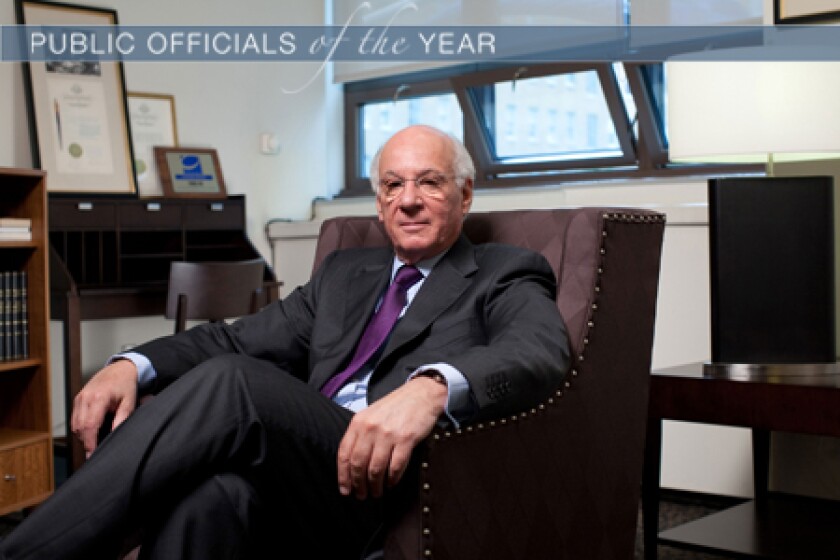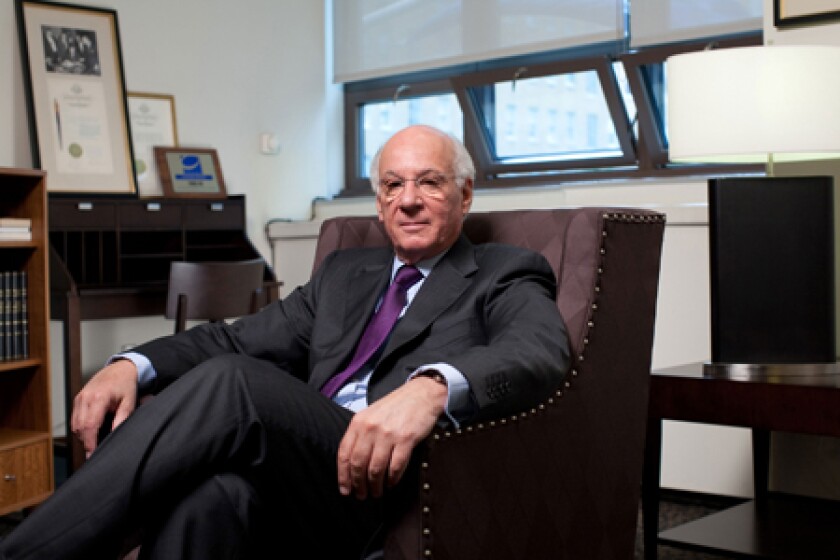

Since he became chancellor of the City University of New York (CUNY) in 1999, Matthew Goldstein could be recognized for any number of his outstanding achievements: turnaround artist, academic standard-setter, performance chief, fundraiser. But a lesser-known accolade could be one of his most important: city partner.
CUNY is an unusual academic institution residing in a unique city. Formerly the City College of New York, the system today consists of 24 schools, including 11 four-year colleges, with nearly a half-million students, most of whom arrive requiring remedial education. CUNY has more than 300 buildings spread across the five boroughs of New York. With that substantial footprint, Goldstein recognized CUNY could play a transformational role in terms of integrating sustainability into the fabric of the school and the surrounding city.
Under Goldstein (City College, Class of 1963), the university has turned the talk of a sustainable partnership into action. In 2011, CUNY released a map on its website showing the solar power potential for approximately two-thirds of New York’s rooftops. By working together, CUNY and New York have helped pave the way for the foundation of a new type of infrastructure based on renewable energy. The map is just the beginning. CUNY is also working with city agencies and utilities to support large-scale renewable energy market growth in the Big Apple. An unusual project for a public university? Perhaps. Outlandish? Definitely not. Given the growing importance of sustainability for cities countrywide, this particular partnership could be a game-changer.
Goldstein has sought out other ways for the country’s largest city university to partner with New York. CUNY has made itself a test-bed for e-book technology and has worked with the city’s Department of Education to find the best way to lower the cost of school text books through the use of digital information in the classroom.
These partnerships reflect Goldstein’s willingness to push for higher levels of excellence. Prior to Goldstein’s appointment as chancellor, CUNY had become, in the memorable words of a mayoral task force, “an institution adrift.” By installing new leaders, setting stringent performance goals, raising more than $2 billion for capital projects, adding 1,700 new faculty and creating new graduate schools for public health, journalism and professional studies, Goldstein has reinvigorated the once-groundbreaking institution. Between 1933 and 1950, City College produced nine alumni who won Nobel Prizes, more than any other public university in the United States during that period.
“For decades, people [have] said anything public is dirty, is mediocre,” says Carnegie Corporation of New York President Vartan Gregorian. “Matt has changed that at CUNY as chancellor.” And he has done it all without sacrificing CUNY’s identity. Of its 430,000 students, 37 percent were born outside the United States. Forty-seven percent speak a language other than English at home.
Thanks to Goldstein’s leadership, CUNY, in the words of Intel co-founder Andy Grove (City College, Class of 1960) has once again become “a veritable American dream machine.”
— John Buntin
Photo by Emile Wamsteker
This article has been updated to reflect the 24 CUNY schools in the system.
In this video, Chancellor Goldstein speaks about human capital in New York City.








